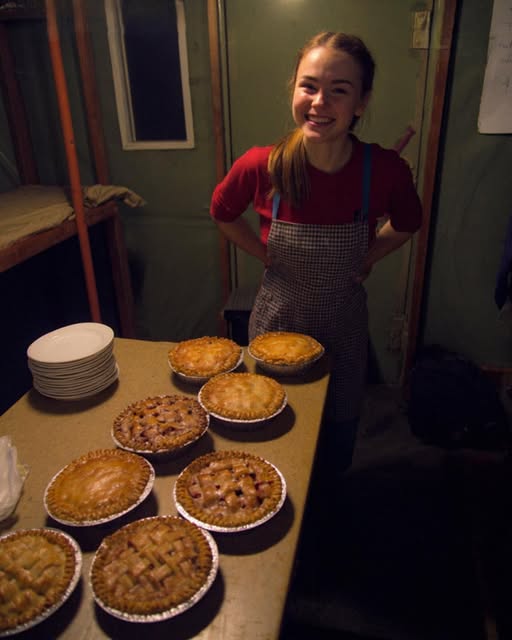Grief reshaped my life in ways I never could have anticipated. It didn’t arrive gently, or in waves like people often say—it came all at once, crashing through my world like a wildfire. I lost my family in a tragic house fire that took everything: my parents, my grandfather, our home, and the quiet rhythm of our ordinary life. In the aftermath, I was left standing in the ashes of what used to be, feeling like a ghost inside a body that didn’t know how to move forward.
With nowhere else to go, I ended up in a youth shelter. My aunt tried, but her circumstances wouldn’t allow her to take me in. I was fifteen, heartbroken, and clinging to anything that made sense. That’s when I found myself in the shelter’s kitchen—drawn there almost instinctively. I wasn’t thinking about healing. I just needed something to do with my hands, something to ground me when the pain got too loud. Baking became that thing.
It started small. I’d rummage through the donated pantry items—bags of flour, old tins of cinnamon, dusty cans of fruit—and see what I could put together. I made simple pies: apple, peach, occasionally pumpkin when I could find it. I’d spend hours in that kitchen, sometimes crying softly as I rolled out dough, sometimes just humming along to the old radio near the window. The act of measuring, mixing, kneading—it gave me something grief couldn’t take. It gave me control, even just for a little while.
At first, the pies were just for the shelter. Then I started quietly leaving them at nearby hospices and shelters in the neighborhood. No notes. No name. Just a pie in a box with a ribbon, left on the front step. I didn’t need anyone to know it was me. It wasn’t about being seen—it was about doing something. A small act of love in a world that suddenly felt so empty.
And then, one day, everything changed.
I was coming back from school when the shelter staff handed me a box. It had my name on it, written in careful cursive. Inside was a pecan pie—my favorite—and a handwritten letter from a woman named Margaret. She said she had been one of the hospice patients who’d received one of my pies. In her note, she wrote, “I don’t know who you are, but your pies taste like memory and warmth. They reminded me of my sister, of my childhood, of laughter. You made my final months feel like living, not just waiting.”
I clutched that letter to my chest and cried for a long time. Someone had felt something from what I made. Somehow, through the sugar and crust, my love had reached her.
A few days later, I received another message—this time from Margaret’s lawyer. She had passed away. And in a gesture I still struggle to fully comprehend, she left everything she owned to me: her house, her belongings, and a modest trust fund that allowed me to finish school and build a life. I had no idea how she found out who I was, or how she knew to give so much. All I knew was that my grief had poured into something, and that something had come back to me in a way that felt like grace.
Today, I live in Margaret’s home. It’s a small, sun-washed cottage with creaky floors and a rose greenhouse out back. The kitchen is filled with light, and above the oven, there’s a little plaque that reads, “The best ingredient is time.” I kept it there, just as she had. I still bake pies, but now I do it in a space that feels sacred, filled with her presence and the memory of all the quiet kindness we shared without ever meeting in person.
I continue to bake for shelters and hospices, but now I always include a card. It reads, “Baked with love. From someone who understands.” Each pie carries a piece of my heart, a fragment of my story. They’re not just desserts—they’re small, sweet reminders that love can live on, even after loss. That healing can begin in a bowl of flour and butter. And that sometimes, when the world feels impossibly heavy, a pie left on a doorstep can whisper, you’re not alone.




